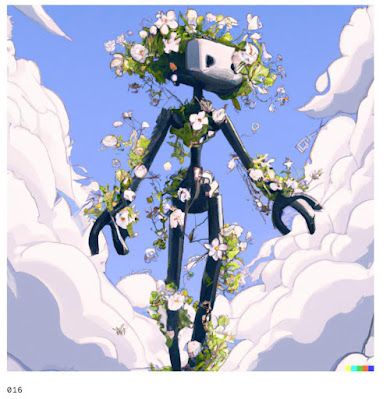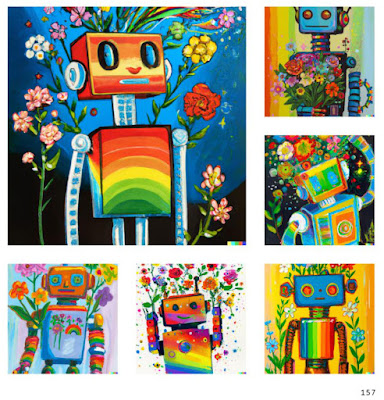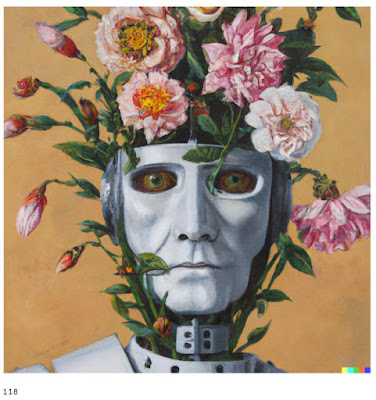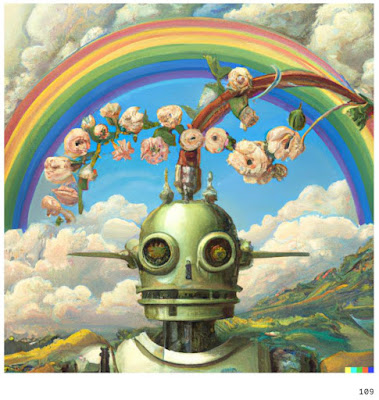How would you imagine a painting of a robot with flowers growing out of it?
"A happy robot with flowers growing out of his head, clouds in the background, digital art."
It's a whimsical idea that might make a fun concept for a children's book.
"A detailed painting of a rainbow colored robot with flowers growing out of its head."
Or it might be a promising pitch for an animated film."A Rene Magritte painting of a robot head with flowers growing out of the top with clouds in the background."
It could also be a theme for a group exhibition of surrealistic gallery art.
"A painting by Syd Mead of a bipedal robot with flowers growing out of the top of its head."
Designer Ben Barry used variations on this idea to generate over a thousand images in different styles. Mr. Barry is not an imagemaker in the usual sense. He is one of the lucky few who received beta access to the AI computer tool called Dall•E 2.
"A woodblock print of a bipedal robot with flowers growing out of the top of its head."
Mr. Barry came up with the instigating phrases or prompts, and Dall•E 2 did the rest, creating hundreds or even thousands of novel images in a few hours. The prompts sometimes used the names of dead artists to catalyze the results, but more often than not the prompts were just descriptive.
These are all high resolution images, adequate for magazine reproduction.
"A painting by Caravaggio of a robot head with flowers growing out of the top."
Mr. Barry edited a digital book that you can check out for free called 1000 Robots on Archive.org. He chose the subject matter of flowers and robots because "I find the idea of an artificial intelligence painting robots to be simultaneously humorous and endearing."
"A painting by Norman Rockwell of a robot head with flowers growing out of the top with clouds and a rainbow in a background, digital art"
The technology seems adept at understanding the artistic logic of the prompt, both in terms of style and content. But there are a few incongruous elements, such as the weird red cable that arcs over to the rainbow.
Mr. Barry says: "While the model is capable of generating other types of images, I found paintings to be the area where it truly excelled aesthetically."
"A colorful painting by M.C. Escher of robot head with flowers growing out of the top"
The survey of styles resembles a Society of Illustrators exhibition or a professional illustrators' workbook. The foregoing two pages don't strike me as particularly reminiscent of Rockwell or Escher, but to me they score quite high on internal coherence and aesthetic appeal.
Right now only a few people have access to this tool, but presumably it will soon be widely available essentially for free.
"a dramatically lit brightly colored detailed painting of a robot artist painting a picture"
The power of this artificial intelligence gives me a mixture of feelings: I'm surprised, delighted, intimidated, and a bit breathless at the speed of the progress.
If you are an illustrator or gallery artist who paints surrealistic images in your particular style, it's a good time for soul-searching.
You might consider:
1. How you would use these tools.
2, How you will provide value for clients who have these tools.
3. How you will create artwork that these tools can't accomplish.
This system of artificial intelligence won't eliminate traditional human artists—(and by "traditional" I include digital artists with those who use physical paint.)
But it will send shock waves through the illustration world, and it will replace a lot of jobs. Soon, anyone and everyone will be able to create images easily, cheaply, and quickly with simple prompts of natural language.










تعليقات
إرسال تعليق